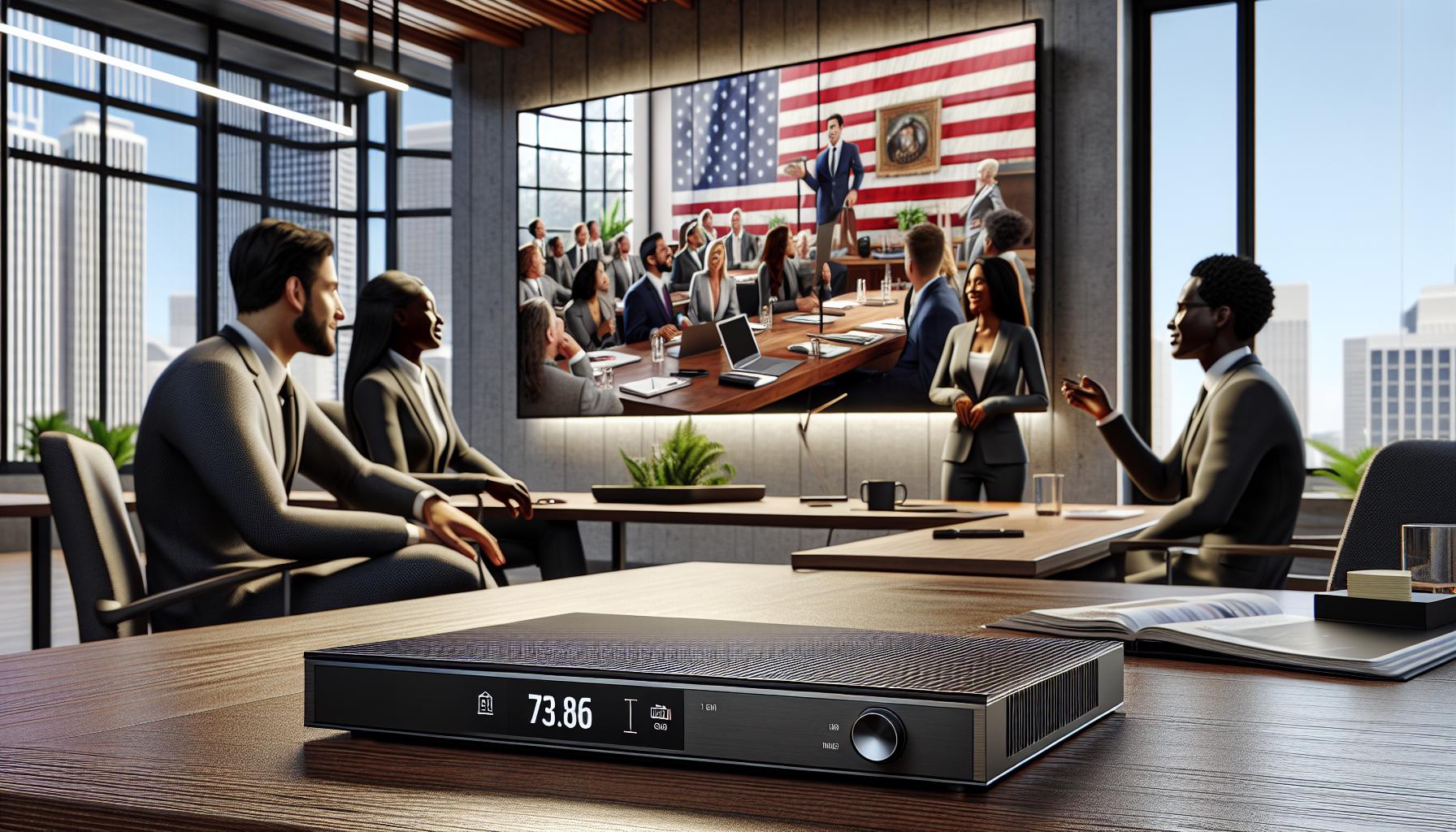Physical Address
304 North Cardinal St.
Dorchester Center, MA 02124

Digital signage media players have revolutionized how businesses communicate with their audiences. These powerful devices serve as the brains behind dynamic digital displays, transforming static content into engaging visual experiences that capture attention and drive engagement.
In today’s fast-paced digital world, businesses need reliable hardware solutions to deliver their messages effectively. A digital signage media player connects to displays and manages content distribution, scheduling, and playback – making it an essential component of any modern digital signage network. From retail stores to corporate offices, these versatile devices help organizations create immersive experiences that leave lasting impressions on viewers while streamlining content management operations.
A digital signage media player is a hardware device that processes digital content and sends it to display screens. It connects to digital displays through HDMI or DisplayPort interfaces to deliver multimedia content such as videos, images, web pages and real-time data.
Digital signage players incorporate essential hardware elements for optimal content delivery:
| Player Type | Storage Capacity | Price Range |
|---|---|---|
| Standalone | 32-128GB | $100-300 |
| Network | 64-256GB | $200-500 |
| SoC | 8-32GB | Built into display |
| PC-Based | 256GB-2TB | $400-1000 |
| Android | 16-64GB | $50-200 |

Digital signage media players transform traditional display methods into dynamic communication platforms. These devices offer multiple advantages that enhance business operations and customer engagement.
Digital signage media players streamline content management through centralized control systems. Users upload multimedia files directly to cloud-based platforms accessible from any location. The system supports diverse file formats including videos, images, HTML5 content and RSS feeds. Content scheduling features enable automated playlist management based on specific times dates or triggers.
| Content Management Features | Impact |
|---|---|
| File Format Support | 15+ formats including MP4, JPG, PNG |
| Storage Capacity | 16GB to 1TB depending on model |
| Update Speed | Real-time to 5 minutes |
| Playlist Management | Up to 100 concurrent playlists |
Remote management capabilities allow administrators to monitor control multiple displays from a single dashboard. The system provides real-time status updates device diagnostics network performance metrics. Administrators receive instant notifications about playback issues or connectivity problems. Remote troubleshooting tools enable quick resolution of technical issues without on-site visits.
| Remote Management Features | Capabilities |
|---|---|
| Device Monitoring | 24/7 real-time status |
| Network Coverage | Global access via internet |
| Response Time | Under 60 seconds |
| Device Support | Up to 1000 players per network |
Selecting an appropriate digital signage player requires careful consideration of hardware capabilities, software requirements, and network infrastructure. The right player ensures optimal performance, seamless content delivery, and effective management of digital displays.
Digital signage players demand specific hardware components for reliable performance:
| Component | Basic Player | Advanced Player |
|---|---|---|
| CPU | Intel Core i3 | Intel Core i7 |
| RAM | 8GB | 16GB |
| Storage | 128GB SSD | 512GB SSD |
| Display Output | 1080p | 4K/8K |
Essential software considerations include:
Digital signage media players offer diverse solutions to meet specific business requirements across different environments. Leading manufacturers provide specialized hardware configurations optimized for digital signage applications.
Cloud-based digital signage players connect directly to online content management systems through internet connectivity. These players feature:
Popular cloud players include:
| Player Model | Storage | Processing Power | Price Range |
|---|---|---|---|
| BrightSign LS424 | 32GB | Quad-core 1.4GHz | $350-450 |
| Navori StiX 3700 | 64GB | Hexa-core 2.0GHz | $400-500 |
| Viewsonic NMP580W | 128GB | Octa-core 2.2GHz | $500-600 |
Standalone digital signage players operate independently without constant internet connectivity. These systems include:
| Player Model | Storage | Output Support | Price Range |
|---|---|---|---|
| SpinetiX HMP400 | 512GB | 4K@60Hz | $700-800 |
| IAdea XMP-7300 | 256GB | Dual 1080p | $450-550 |
| ONELAN NTB-HD-1000 | 1TB | 4K@30Hz | $800-900 |
Digital signage media player installation requires precise configuration steps to ensure optimal performance. The process involves network setup configuration management protocols that align with specific business requirements.
Network configuration starts with connecting the media player to a secure local area network through ethernet or WiFi. Here are the essential configuration steps:
| Setup Component | Minimum Requirement | Recommended Specification |
|---|---|---|
| Network Speed | 10 Mbps | 50+ Mbps |
| Storage Space | 32 GB | 128 GB |
| RAM | 2 GB | 4+ GB |
| Display Resolution | 1920×1080 | 3840×2160 |
| Processing Power | Dual-core | Quad-core |
Digital signage media players require regular maintenance and prompt troubleshooting to ensure optimal performance and minimize downtime. Implementing preventive measures and understanding common issues helps maintain system reliability.
Digital signage media players face several operational challenges that impact content delivery performance:
Performance optimization ensures smooth content delivery through specific maintenance procedures:
| Task | Frequency | Priority |
|---|---|---|
| Cache Clearing | Weekly | High |
| Software Updates | Monthly | High |
| Content Cleanup | Quarterly | Medium |
| Hardware Inspection | Bi-annual | Medium |
Digital signage media players stand as essential tools in modern business communications. These versatile devices enable dynamic content delivery while offering robust management capabilities through user-friendly interfaces. Their ability to streamline operations transforms how businesses connect with their audiences across various environments.
The right combination of hardware specifications software compatibility and network infrastructure ensures optimal performance and reliable content delivery. Whether choosing cloud-based or standalone solutions businesses can find a digital signage player that matches their specific needs and budget while delivering engaging visual experiences.
Regular maintenance and proper setup create a foundation for success making digital signage an invaluable asset in today’s competitive marketplace. With continued technological advances these solutions will remain at the forefront of visual communication strategies.